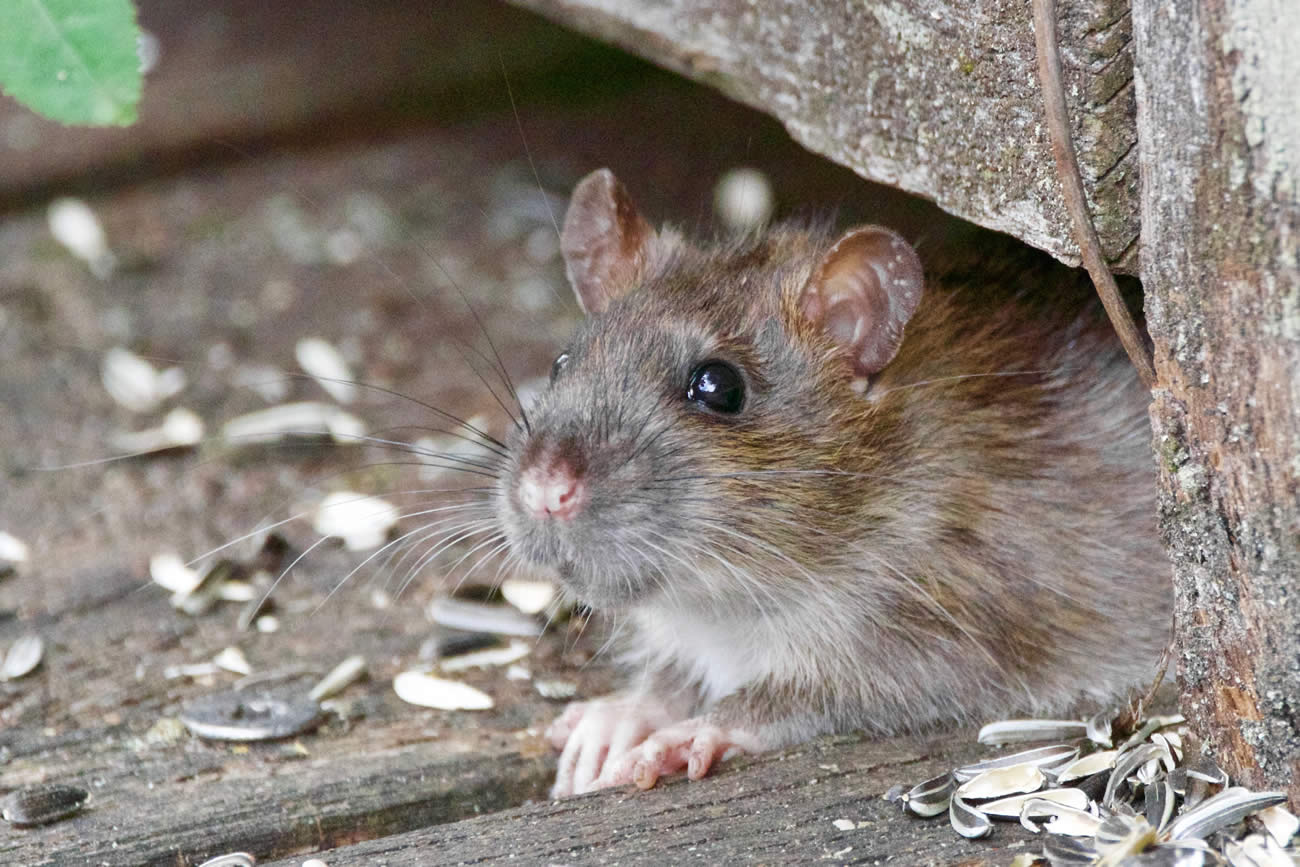Rats, notorious for their prevalence and destructive nature, can wreak havoc in countless homes. With their rapid reproduction rate and ability to spread diseases, it’s no wonder homeowners are concerned about how far these pests travel from their nests. Understanding the scope of their movements is crucial in devising effective strategies to control and prevent rat invasions.
In this comprehensive post, we will delve into the fascinating world of rat behaviour, exploring the distances they traverse from their nests and equipping you with valuable knowledge to safeguard your home from these unwanted intruders. So, grab a cup of coffee, sit back, and embark on this enlightening journey into the realm of rats and their nesting habits.
Table of Contents
ToggleHow Far Do Rats Travel From Their Nest?
Rats, being highly social animals, thrive in colony-like groups. They exhibit a fascinating behaviour of seeking out hidden, dark areas to evade detection and establish their nests. These nests, commonly found in walls, beneath the floorboards, or other secure locations, serve as their safe havens. Notably, rats display territorial tendencies, claiming a relatively confined area around their nest.
Their exploratory range spans approximately 50 to 150 feet, with an average distance of around 100 feet from their nest serving as their typical foray. This intricate balance of social dynamics and spatial awareness highlights the intriguing nature of these resilient creatures.
Rats, being resourceful scavengers, are always on the lookout for sustenance and hydration. With their innate ability to travel long distances, they can venture up to 300 feet from their nest in search of food and water sources. This remarkable range allows them to explore a wide area surrounding your home, increasing the likelihood of their intrusion if they stumble upon something valuable.
As a result, it becomes crucial to ensure the security of your pet or livestock feed, taking necessary precautions to prevent the unwelcome presence of rats within your residence. By implementing these measures, you can effectively safeguard your home from potential rat infestations.
Rats, being creatures of habit, tend to travel along established routes known as rat-runs or travel routes. These fixed paths become their go-to way of reaching their destination, which is why you consistently find their droppings in the same location or along the same path. Therefore, if you happen to spot rats in your property, it becomes crucial to not only identify these routes but also take immediate action to block them off effectively. By preventing their movement, you can effectively deter rats from causing further trouble in your premises.
Rats, with their exceptional sense of smell, rely on it to navigate their surroundings. They establish regular routes to reach their sources of food and water, utilising their remarkable memory to recall these paths even after considerable time has passed. To prevent them from infiltrating your home and causing damage, it is crucial to disrupt their familiar routes by employing deterrents such as sound, motion, or other effective measures. By introducing these additional obstacles, you can effectively impede their access and safeguard your living space.
Conclusion
Rats, those notorious pests that can be hard to control and eradicate, pose a constant threat to the sanctity of our homes. However, gaining a deeper understanding of their travel patterns and the distances they cover can significantly contribute to preventing their unwelcome intrusion. By familiarising ourselves with the extent of their journeys, we can maintain a safe distance from their nests, effectively limiting their access to essential resources like food and water.
Furthermore, armed with this knowledge, we can identify their favoured routes and effectively obstruct their movements, thwarting their attempts to infiltrate our living spaces. Therefore, it is crucial to remain vigilant, constantly on the lookout for signs of a rat infestation, and promptly implement the necessary precautions to ensure our homes remain rat-free sanctuaries.
Tips, Tricks & Facts
Rats are highly mobile creatures and can travel considerable distances in search of food, water, and shelter. The average rat will travel between 300 and 500 feet from its nest, but some rats have been known to travel up to a mile or more. The exact distance travelled will depend on a number of factors, including the availability of food and water, the size of the population, and the type of habitat.
Here are some of the factors that can influence how far a rat will travel from its nest:
- Food Availability: Rats are opportunistic feeders and will travel long distances to find food sources. If food is scarce in their immediate area, they may be forced to venture further afield in search of sustenance.
- Water Availability: Rats also need to drink water regularly, and they will travel to find sources of water even if they are not hungry. If water is scarce in their area, they may be more likely to travel long distances in search of it.
- Population Density: Rats are social creatures that live in colonies. The more rats there are in an area, the less territory each rat will have access to. This can force rats to travel further afield to find resources and establish new territories.
- Habitat: Rats are adaptable creatures that can live in a variety of habitats, including urban areas, forests, and farmlands. The type of habitat will also influence how far rats travel. For example, rats in urban areas may not need to travel as far as rats in rural areas, as there are more food and water sources available in close proximity.
If you think you have rats in your home, the first thing you should do is identify the entry points they are using to get inside. Once you have identified the entry points, you can seal them up with caulk or steel wool to prevent rats from entering. You should also take steps to remove any food sources that rats may be attracted to. This includes storing food in airtight containers, cleaning up spills and crumbs immediately, and keeping pet food out of reach. You can also set traps or bait to catch rats, but it is important to use them correctly to avoid attracting more rats into your home. If you have a serious rat infestation, you may need to contact a professional pest control company.
Here are some additional tips for preventing rats from entering your home:
- Keep your yard clean and free of debris. Rats are attracted to clutter and will use it as nesting material.
- Trim tree branches that overhang your home. Rats can climb trees and use them to access your home.
- Seal up any holes or cracks in your home’s exterior. Rats can squeeze through even the smallest openings.
- Install weather stripping around doors and windows. This will help to seal out rats and other pests.
- Have your home inspected by a professional pest control company every year. This will help to identify any potential problems and prevent rats from entering your home.
By implementing these practical tips and adopting preventive measures, you can effectively safeguard your home and loved ones from the health hazards posed by rats. Don’t let these pesky rodents jeopardise your family’s well-being. Take action today to keep them at bay and maintain a safe and healthy living environment.
FAQs
How can you identify and locate rat nests in or around your home?
Look for signs like droppings, greasy rub marks, gnaw marks, burrows, and squeaking or scurrying noises. Focus on secluded areas like attics, crawl spaces, behind walls, and under bushes outside. Also inspect along walls, under sinks, and around pipes where rats may build nests.
What diseases can rats spread, and what risks do they pose to human health?
Rats can spread over 35 diseases through their urine, droppings, and bites. These include leptospirosis, salmonella, rat-bite fever, and the plague. Rats also trigger allergies and asthma. Their gnawing and nesting habits can cause structural damage, fires, and utility outages.
What are some effective ways to block or obstruct rat runs and travel routes?
Use wire mesh, concrete, metal sheeting, or other solid materials to block access along foundations, walls, pipes, and other routes. Prune tree branches overhanging the home. Clear clutter and debris outside. Set snap traps along known runways.
What types of deterrents, such as sound, motion or smell, can be used to disrupt familiar rat routes?
Ultrasonic devices, sprinkling cayenne pepper or pepper spray along runs, placing balloons with rat repellent peppermint oils along routes, and using strobe lights or motion sensor lights to startle rats. Also use predator urine smells.
How often should you inspect your home for potential entry points that rats could use?
Inspect the interior and exterior of your home at least once a month to check for new holes, gaps, and access points that could allow rats to enter. Pay close attention during seasons when rats seek warmer shelter.
What steps can you take to remove food sources that may attract rats to your home?
Store human and pet food in chew-proof containers. Clean up spills and crumbs immediately. Do not leave pet food out overnight. Keep compost bins away from home. Pick ripe fruit/vegetables promptly. Secure trash cans with tight lids.
When should you contact a professional pest control company to deal with a rat infestation?
If you have visible rats, droppings, rub marks, gnaw marks, burrows, nests, strange odours, or noises, it likely indicates a serious infestation. Professional help is required for large infestations, if rats appear despite your efforts, or if you want to fully eliminate rats on your property.
What preventative measures can you take in your yard to deter rats from approaching your home?
Keep the yard free of debris, woodpiles, dense vegetation, and clutter that rats use for shelter. Trim overhanging tree branches. Clear ivy or vines growing on the home. Set traps and bait stations around the perimeter.
How can weather stripping around doors and windows help prevent rats from entering your home?
Weather stripping seals gaps around doors/windows that rats can squeeze through. It blocks access points and deters rats from entering, nesting, and causing damage inside the home.
What signs should you look out for to determine if rats have already entered your home?
Droppings, greasy rub marks, gnaw marks on walls or wood, chewed wires, strange odours, noises from attics/walls, evidence of nesting materials, and sightings of live or dead rats inside the home.



















